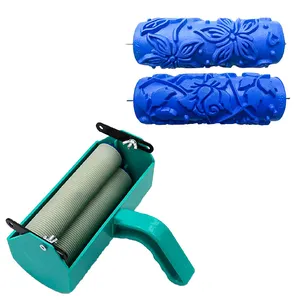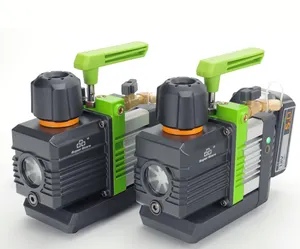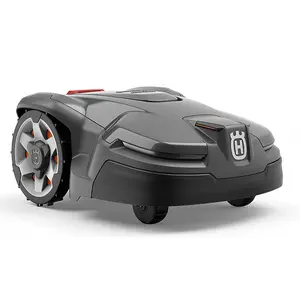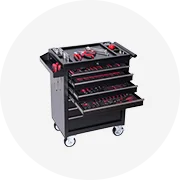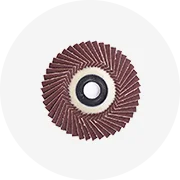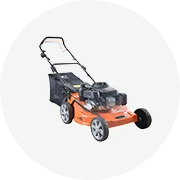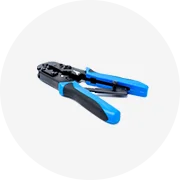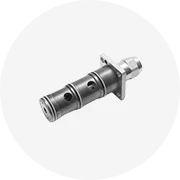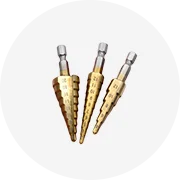Popolare nel tuo settore






Blocco della porta senza fili per Hotel Controllo remoto di accesso tramite APP impronte digitali RFID Card
Pronto per la spedizione
50,26 € - 63,29 €
Ordine minimo: 2 parti
Spedizione per pezzo: 25,05 €






6068 mortasa Ttlock App per telefono cellulare Bluetooth con Password Card con chiave in vetro per porta Smart Lock
Pronto per la spedizione
25,88 € - 27,74 €
Ordine minimo: 2 parti
Spedizione per pezzo: 30,46 €



Lusso grigio di alta qualità 3D riconoscimento facciale Smart Lock App controllo del telefono Fingerprint Smart Home Wifi Tuya Door Lock
Pronto per la spedizione
144,27 € - 167,52 €
Ordine minimo: 5 parti
Spedizione per pezzo: 12,59 €

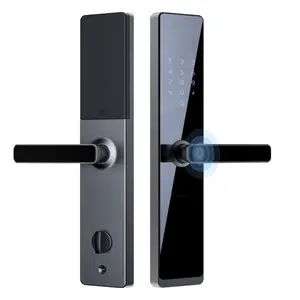





Tlock Smartlock Password di accesso senza chiave Cerradura Inteligente carta di impronta digitale elettronica serratura della porta anteriore serratura Smart
Pronto per la spedizione
26,81 € - 52,87 €
Ordine minimo: 2 parti
Spedizione per pezzo: 18,23 €



Gosund palla a sgancio rapido intelligente pomello porta biometrico impronta digitale elettrico pomello serratura per App porte interne di controllo
18,62 € - 22,61 €
Ordine minimo: 10 parti




BBDHOME Smart Set di porte anteriori-con maniglie a 2 leve-tastiera elettronica codice catenaccio serratura per impronte digitali
18,15 € - 28,86 €
Ordine minimo: 100 parti







TTlock APP Elettronico Serratura Della Porta Tastiera Digitale Serratura della Porta di carta di Combinazione Per La Casa Ufficio
Pronto per la spedizione
37,23 € - 46,54 €
Ordine minimo: 2 insiemi
Spedizione per pezzo: 38,91 €






Vendita calda di alta qualità AJF Multi-colore in alluminio digitale combinazione di serratura per bagagli e serratura per porta di legno
Pronto per la spedizione
1,40 € - 4,66 €
Ordine minimo: 2 parti
Spedizione per pezzo: 2,96 €






4 cifre serratura a combinazione per il metallo porta Scorrevole cyber serratura dalla Thailandia
4,81 € - 4,98 €
Ordine minimo: 1 parte




Sargent 6535 Sargent 4 combinazione Ruota di blocco di sicurezza per la banca vault porta
465,36 € - 483,98 €
Ordine minimo: 5 insiemi
Ricerche correlate:
serratura a combinazione per porta d'ingressoserratura di codice per la portaserratura digitale per porta scorrevoleserratura elettronica per portaserratura a combinazione per porte scorrevoli in vetroserratura a combinazione porta scorrevoleserratura a cilindro per porta scorrevole in vetroserratura per la porta del cancelloserratura a 2 punti per porte scorrevoliblocco combinazione di codicecombinazione di serratureserrature di combinazione amazonserrature dell'entrataserrature comuniserratura di combinazione della porta anteriore






Alta Sicurezza Serratura a Combinazione Per Porta Della Cassaforte
0,0931 € - 1,87 €
Ordine minimo: 1 parte






Serratura intelligente digitale completamente automatica Tuya Wifi impronta digitale serratura per ufficio camera da letto
Pronto per la spedizione
53,99 € - 60,50 €
Ordine minimo: 2 insiemi
Spedizione per pezzo: 22,09 €






Chna produttore fornitura prezzo ragionevole all'ingrosso in lega di zinco digitale combinazione Password serratura porta per la casa
Pronto per la spedizione
35,08 € - 37,95 €
Ordine minimo: 2 insiemi
Spedizione per pezzo: 16,53 €






Eseye controllo App TTlock di alta qualità 6068 serrature da infilare di sicurezza per serratura digitale in legno per impronte digitali
Pronto per la spedizione
47,38 € - 55,75 €
Ordine minimo: 2 scatole
Spedizione per pezzo: 21,31 €






Combinazione di alta Qualità Esterno Serratura di Portello Per La Casa Allo Stesso Modo Serratura a Chiave
7,45 € - 11,17 €
Ordine minimo: 1000 insiemi






Combinazione di cifre blocco a camma blocco senza chiave con Password serrature per armadietti per cassette postali
Pronto per la spedizione
1,77 € - 1,96 €
Ordine minimo: 10 parti
Spedizione per pezzo: 2,22 €






Nuova Cerradura Serrure Intelligente biometrica digitale combinazione Finger Print Password Ttlock Smart serratura per porte in legno
Pronto per la spedizione
14,78 € - 33,40 €
Ordine minimo: 1 parte
Spedizione per pezzo: 22,71 €





NOI. SERRATURA Serratura elettrica per Porta password di login Combinazione serratura della tastiera
32,58 € - 37,23 €
Ordine minimo: 100 parti






Bicromato di potassio placcato 7 pin di sicurezza in ottone speciale chiave tubolare cilindro porta box mini cam lock per armadio di rete e il computer
Pronto per la spedizione
2,84 €
Ordine minimo: 1000 parti
Spedizione per pezzo: 0,0745 €



Serratura a combinazione appesa per serratura a combinazione di libri immobiliari con chiavi, serratura di sicurezza
4,38 € - 4,75 €
Ordine minimo: 1000 parti





3 cifre Combinazione Digitale Cassetto Armadietto Elettronico Porta Contanti Palestra Box Locker Password di Blocco Per Mobili
14,47 € - 18,81 €
Ordine minimo: 1 parte






Everstrong in lega di zinco password di blocco per porta in alluminio porta in acciaio ST-G209C keyless Meccanico combinazione digitale codice di blocco
13,97 € - 27,93 €
Ordine minimo: 1 insieme






YH1808-80 4 Cifre del Codice In Acciaio Inox Tondo Disco Combinazione Lucchetto Serratura Con Indurito Grillo Per Palestra Armadietto Porta del Magazzino
Pronto per la spedizione
3,26 € - 4,01 €
Ordine minimo: 100 parti
Spedizione per pezzo: 0,968 €






Heavy duty combinazione lucchetto 4 cifre sicuro rettangolo di sicurezza 4 numero blocco Password per porta bici armadietto
Pronto per la spedizione
2,15 € - 2,33 €
Ordine minimo: 100 parti
Spedizione per pezzo: 0,5119 €






App Smart Serratura Digitale Serratura Elettronica WiFi Digitale di Impronte Digitali tastiera Combinazione Manopola di Bloccaggio Per La casa
Pronto per la spedizione
65,16 € - 74,46 €
Ordine minimo: 2 parti
Spedizione per pezzo: 21,16 €






Tuya App Fingerprint Rfid IC Card Key Ttlock serratura a cilindro intelligente per la sostituzione del vecchio cilindro meccanico
Pronto per la spedizione
53,99 € - 55,85 €
Ordine minimo: 1 parte
Spedizione per pezzo: 16,85 €






In lega di zinco stile europeo Villa serratura 2G impermeabile serratura meccanica per porta con maniglia
40,03 € - 48,40 €
Ordine minimo: 5 insiemi
Spedizione per pezzo: 8,87 €


Smart cassetta di sicurezza elettronica digitale della carta di rfid password di serratura a combinazione gabinetto di blocco della porta per hotel mobili palestra spa locker
Pronto per la spedizione
5,50 € - 7,45 €
Ordine minimo: 2 parti
Spedizione per pezzo: 9,35 €






Serratura a combinazione digitale della fabbrica 30MM 4 cifre lucchetto lucchetto a combinazione pesante serratura per porta dell'armadio
0,9215 € - 1,86 €
Ordine minimo: 2 parti






Pcba piatto impronte digitali catenaccio biometrico di impronte digitali porta blu dente di elettroni di ricambio blocco per serrature a combinazione elettronica
Pronto per la spedizione
25,97 € - 28,86 €
Ordine minimo: 1 parte
Spedizione per pezzo: 27,17 €






Serratura a forma di U di grandi dimensioni accettabile per porte serratura a combinazione digitale per armadio
Pronto per la spedizione
2,52 € - 2,80 €
Ordine minimo: 20 parti
Spedizione per pezzo: 2,52 €






RSL-1050-20, 20mm 3 cifre combinazione di blocco chiave chiave chiave chiave blocco casella di posta per porta armadio casella di posta
1,85 € - 2,78 €
Ordine minimo: 10 insiemi




Pin elettronico Combinazione Codice Digitale Password di Blocco Per Porta di Casa
28,51 € - 31,96 €
Ordine minimo: 2 parti






Serratura di sicurezza per porta con chiusura a scatto in ferro con corpo combinato e serrature di sicurezza a tre chiavi per porte
3,36 € - 4,18 €
Ordine minimo: 300 parti






Ansi grade 2 knobset cilindrica door knob serrature con chiavi in ottone per ingresso/ufficio di blocco commerciale serratura della porta
7,79 € - 8,61 €
Ordine minimo: 50 parti






Impronta biometrica smart serratura porta cerradura smart design per la casa maniglia serratura Bluetooth manopola serratura per ufficio airbnn
Pronto per la spedizione
16,29 € - 18,62 €
Ordine minimo: 12 coppie
Spedizione per pezzo: 3,54 €
Migliori categorie
Su serratura a combinazione per porta
Trova l'alta qualità serratura a combinazione per porta su Alibaba.com a ottimi prezzi e sconti incredibili. serratura a combinazione per porta venduti da fornitori, grossisti e produttori certificati sono realizzati con materiali di qualità che garantiscono che le setole non si rompano o si sfilino dopo l'uso. Sono universali per soddisfare usi diversi. I consumatori possono averli personalizzati per uso commerciale o come set regalo.
serratura a combinazione per porta venduti su Alibaba.com sono perfetti in quanto mantengono la loro forma anche dopo l'uso per lunghi periodi di tempo. Sono facili da usare in quanto sono facili da impugnare e hanno comode maniglie. Questi prodotti sono facili da pulire e questo assicura che non accumulino batteri che causano infezioni. Sono anche resistenti al calore, rendendoli ideali da utilizzare per lisciare i capelli. Utilizzati per la pulizia di aree e superfici difficili, sono disponibili in dimensioni e forme universali. Questi prodotti sono anche elettrici, quindi sono convenienti per viaggiare. Progettati per uso singolo e per aiutare a mantenere alti livelli di igiene e igiene, questi prodotti sono usa e getta senza problemi.
Questi serratura a combinazione per porta sono ideali per l'applicazione del trucco, poiché non assorbono troppo prodotto . Gli artisti li usano perché danno tratti perfetti e hanno anche punte sulle setole. Aiutano anche a ottenere un aspetto naturale impeccabile poiché sono sodi e offrono facilità di controllo. Sono morbidi sulla pelle e non provocano irritazioni cutanee. Sono comodi da usare in quanto rimuovono perfettamente il grasso su superfici e pavimenti prima della pulizia. Questi prodotti sono leggeri e flessibili, il che li rende un'ottima scelta di prodotto. Quando utilizzati per cuoio capelluto sensibile, sono ideali in quanto non tirano i capelli e aiutano a districare i nodi.
Ottieni serratura a combinazione per porta opzioni su Alibaba.com. Acquista spazzole da fornitori, produttori e grossisti di fiducia. Visita il sito web e ottieni grandi sconti sugli acquisti all'ingrosso.
serratura a combinazione per porta venduti su Alibaba.com sono perfetti in quanto mantengono la loro forma anche dopo l'uso per lunghi periodi di tempo. Sono facili da usare in quanto sono facili da impugnare e hanno comode maniglie. Questi prodotti sono facili da pulire e questo assicura che non accumulino batteri che causano infezioni. Sono anche resistenti al calore, rendendoli ideali da utilizzare per lisciare i capelli. Utilizzati per la pulizia di aree e superfici difficili, sono disponibili in dimensioni e forme universali. Questi prodotti sono anche elettrici, quindi sono convenienti per viaggiare. Progettati per uso singolo e per aiutare a mantenere alti livelli di igiene e igiene, questi prodotti sono usa e getta senza problemi.
Questi serratura a combinazione per porta sono ideali per l'applicazione del trucco, poiché non assorbono troppo prodotto . Gli artisti li usano perché danno tratti perfetti e hanno anche punte sulle setole. Aiutano anche a ottenere un aspetto naturale impeccabile poiché sono sodi e offrono facilità di controllo. Sono morbidi sulla pelle e non provocano irritazioni cutanee. Sono comodi da usare in quanto rimuovono perfettamente il grasso su superfici e pavimenti prima della pulizia. Questi prodotti sono leggeri e flessibili, il che li rende un'ottima scelta di prodotto. Quando utilizzati per cuoio capelluto sensibile, sono ideali in quanto non tirano i capelli e aiutano a districare i nodi.
Ottieni serratura a combinazione per porta opzioni su Alibaba.com. Acquista spazzole da fornitori, produttori e grossisti di fiducia. Visita il sito web e ottieni grandi sconti sugli acquisti all'ingrosso.

